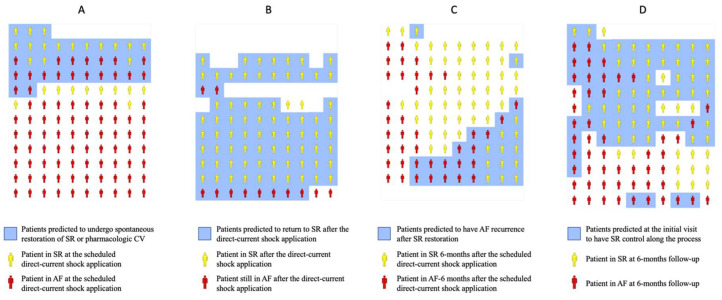Figure 3.
Illustration of envisioned clinical utilization of the machine-learning predictions along the elective electrical cardioversion (EC) process. For the predictions, it was used an independent dataset (from that used for the generation of the machine-learning models) of 113 patients. Patients in sinus rhythm (SR) are represented in yellow and patients in atrial fibrillation (AF) in red. Patients predicted by the machine-learning model to undergo or be in SR are included in a blue background. Panel (A) represents predictions (blue background) to undergo spontaneous restoration of SR or pharmacological cardioversion (CV) and ground truth findings for each patient (yellow or red). Panel (B) represents predictions (blue background) of efficacy of direct-current shock application and ground truth findings for each dataset patient (yellow or red). Panel (C) represents predictions (blue background) of AF recurrence at 6 months after SR restoration and ground truth findings for each patient (yellow or red). Panel (D) represents predictions (blue background) of SR control at 6 months and ground truth findings for each patient (yellow or red).

